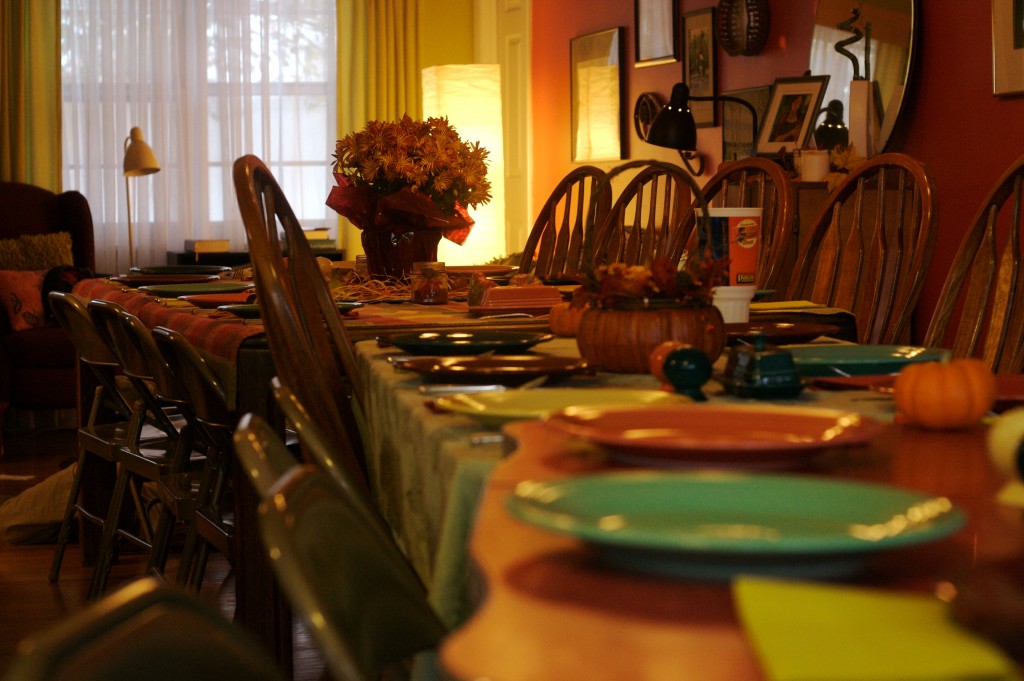The Key to Finding Gratitude Within
Photo Credit: Flickr Creative Commons
As we enter the holiday season, everywhere we go we are bombarded with images and messages to buy something that would make life and the holidays perfect. Each image is like an invitation to a more beautiful and fulfilled life. The urge to give into the idea of having a perfect anything is quite seductive. One thing we all know is that the wanting never stops. We buy one thing and we may feel a sense of satisfaction in the moment, but that feeling is fleeting and soon after we find ourselves wanting something else.
Sitting with what is just as it is lends itself to feeling grateful
I remember when our youngest daughter was five-years-old and she would beg for every new toy she saw. Each new thing we bought her had a short-lived effect on her happiness. After a while we encouraged her to keep a “want book.” Every time she wanted something she would write it in her book and at the end of the week we would talk about all the things she wanted. Granted she was only five, but by the end of the week she could barely remember what she had written down. Most of the time she would say with great confidence, “I don’t want that anymore.”
As we age our wants may slow down, yet sometimes we still find ourselves trapped by our endless desire to fulfill ourselves with things outside of us to bring us joy. As we refine our hearts and minds, many of us realize that the things we want the most are health and happiness.
What Drives Our Wants
When we get quiet and really look at where our wanting comes from, its often initiated by our feelings of emptiness, or the sense that something outside of us will fill a lack inside of us. In the tradition of yoga there is a practice called Santosha or contentment. It is a practice of cultivating a sense of being ok and content to be with yourself in this moment, with whatever happens and what you are feeling. It gives rise to the idea that we have what we need and we don’t need to keep looking for more. It lets us drop into the moment and settle without wishing or wanting things to be different. In time our attention turns inward and we feel a deep sense of satisfaction. At that point, we stop looking for something outside of ourselves that will make us feel full and happy.
Ultimately we have to ask ourselves why we feel empty. Learning to sit with those uncomfortable or difficult feelings is what gives rise to Santosha. In time, sitting with what is just as it is lends itself to feeling grateful. We begin to drop deeply into the moment. It’s here we begin to see what we have in a different way and with more appreciation.
Feeling Gratitude for Where We Are
When we try to run away from our feelings of emptiness or discomfort, we often find ourselves trying to fill ourselves with “things.” We want the next best car, house, electronics or that bigger or better job or a more exciting relationship. We can get caught in a want cycle. This is not to say that wanting is all-bad. It can motivate us to work hard and be productive in work and our creative pursuits. But what if we could work a little bit with what we have? What if we could drop into this moment and just settle with how things are?
This simple process supports the practice of gratitude. Gratitude is a pathway we cultivate with our mind and heart. If we are content, we tend to accept our lives with appreciation and optimism. In the spirit of Thanksgiving, we can begin to appreciate what we have and come back to the realization that we are whole and complete. Happiness is an inside job and it starts with us.
Three Ways to Practice Santosha
1. The next time you feel pulled to buy something ask yourself these questions:
- Do I really need this?
- Will this bring me joy?
- Could I be happy without it?
2. As you encounter difficult emotions, see if you can make room to feel those and notice your impulse to try to make yourself more comfortable by trying to escape through either purchasing, or eating or sleeping. Maybe there are other ways you escape feeling. Notice the ways you move away from difficult feelings and see if you can get comfortable in the discomfort.
3. When you are eating, can you stop before you are uncomfortably full? Can you explore what drives taking that extra bite?
What happens to you when stop trying to fill yourselves from the outside?






